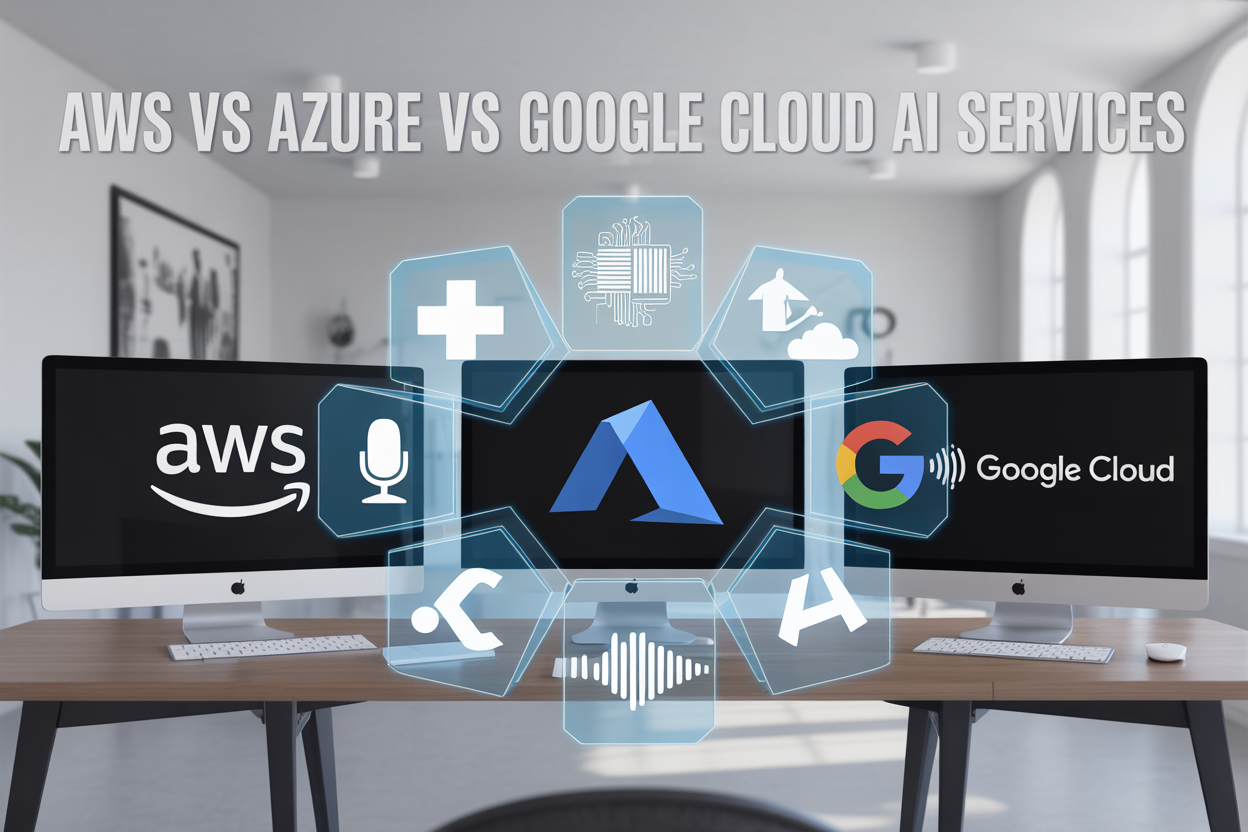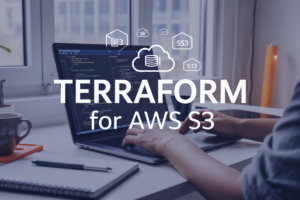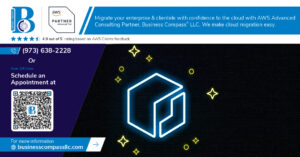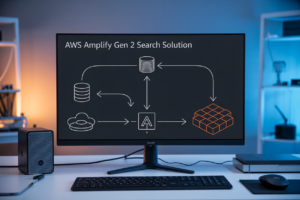Choosing the right cloud platform for healthcare AI can make or break your medical applications. This AWS vs Azure vs Google Cloud comparison breaks down the essential AI services healthcare organizations, medical startups, and developers need most: transcription, medical NLP, entity detection, ontology mapping, translation, and text-to-speech capabilities.
Healthcare professionals building patient documentation systems, medical researchers processing clinical data, and developers creating health apps will find clear insights into which platform delivers the best performance and value. We’ll examine how each cloud provider handles medical transcription services with specialized healthcare features, compare their AI transcription accuracy rates, and analyze their medical entity detection capabilities for extracting clinical insights from unstructured text.
You’ll also discover detailed pricing breakdowns for cloud NLP services, real-world performance benchmarks for text-to-speech API comparison across medical use cases, and practical implementation strategies that help you avoid common integration pitfalls while maximizing your healthcare cloud services investment.
Transcription Services Performance Analysis

AWS Transcribe Accuracy Rates and Real-Time Capabilities
AWS Transcribe delivers impressive accuracy rates ranging from 85-95% for clear audio recordings, with performance varying based on audio quality and accent diversity. The service excels in real-time streaming transcription, processing audio with latency as low as 200-400 milliseconds. AWS Transcribe supports over 31 languages and offers automatic punctuation, speaker identification for up to 10 speakers, and confidence scores for each transcribed segment.
The platform’s custom vocabulary feature allows users to improve accuracy for domain-specific terminology, making it particularly valuable for technical or specialized content. Channel identification enables processing of stereo audio files with separate speakers on different channels. AWS Transcribe also provides automatic language identification, detecting the primary language when multiple languages might be present in a single audio file.
Azure Speech-to-Text Reliability and Multilingual Support
Azure Speech-to-Text stands out with its robust multilingual capabilities, supporting over 100 languages and dialects with consistent reliability across different accent variations. The service maintains 90-96% accuracy rates for high-quality audio and offers real-time transcription with customizable models tailored to specific industries or use cases.
Microsoft’s neural network approach provides superior noise cancellation and acoustic model adaptation. The service includes conversation transcription that can handle multiple speakers simultaneously, automatic diarization, and profanity filtering. Azure’s custom speech feature allows organizations to create personalized models using their own audio data and transcripts, significantly improving accuracy for specialized vocabularies or unique acoustic environments.
The platform’s batch transcription service can process large audio files efficiently, while the real-time API supports WebSocket connections for continuous speech recognition applications.
Google Cloud Speech-to-Text Speed and Punctuation Features
Google Cloud Speech-to-Text processes audio at remarkable speeds, transcribing one hour of audio in approximately 30 seconds for batch operations. The service achieves accuracy rates of 88-94% and offers enhanced punctuation capabilities that automatically insert periods, commas, and question marks based on speech patterns and pauses.
Google’s automatic punctuation feature uses advanced machine learning models to understand context and speech flow, producing more readable transcripts without manual editing. The service supports 125+ languages and variants, with streaming recognition providing results in real-time with interim results that update as speech continues.
Word-level timestamps and confidence scores help identify potentially inaccurate sections. Google’s speaker diarization can distinguish between different speakers in multi-person conversations, while noise robustness handles various audio environments effectively.
Cost Comparison Per Hour of Audio Processed
| Service | Standard Pricing (per hour) | Real-time Pricing | Enhanced Features |
|---|---|---|---|
| AWS Transcribe | $0.024 | $0.025 | Custom vocabulary: +$0.003 |
| Azure Speech-to-Text | $0.022 | $0.024 | Custom models: +$0.004 |
| Google Cloud Speech-to-Text | $0.024 | $0.026 | Enhanced models: +$0.009 |
AWS offers the most straightforward pricing structure with minimal additional costs for enhanced features. Azure provides the lowest base pricing but charges more for advanced customization. Google Cloud has competitive base rates but premium features like enhanced punctuation and speaker diarization command higher prices.
Volume discounts apply across all three platforms, with significant savings available for processing over 1 million minutes monthly. Azure often provides the best value for organizations already using Microsoft’s ecosystem, while AWS excels in cost predictability for variable workloads.
Medical Transcription Specialized Features

HIPAA Compliance and Security Protocols Across Platforms
AWS, Azure, and Google Cloud all provide HIPAA-compliant transcription services, but their approaches differ significantly. AWS Transcribe Medical includes Business Associate Agreements (BAAs) and automatically encrypts data both in transit and at rest using AES-256 encryption. The service processes audio in dedicated, HIPAA-eligible infrastructure with strict access controls and comprehensive audit logging.
Azure Speech-to-Text for Healthcare offers similar HIPAA compliance with Customer Lockbox capabilities, allowing healthcare organizations to approve or reject Microsoft access requests to patient data. Azure’s compliance extends to SOC 2 Type II, HITRUST, and FedRAMP certifications, making it particularly attractive for government healthcare facilities.
Google Cloud Speech-to-Text Healthcare API provides HIPAA compliance through signed BAAs and maintains data residency controls. Google’s security model includes VPC-native networking and private Google access, ensuring medical audio never traverses public internet pathways. Their approach emphasizes zero-trust architecture with identity-aware proxy controls.
| Platform | Encryption | BAA Available | Additional Certifications |
|---|---|---|---|
| AWS | AES-256 | Yes | SOC, ISO 27001, FedRAMP |
| Azure | AES-256 | Yes | HITRUST, FedRAMP High |
| Google Cloud | AES-256 | Yes | ISO 27001, SOC 2 Type II |
All three platforms provide detailed audit trails and compliance reporting, but Azure edges ahead with its comprehensive compliance portfolio specifically tailored for healthcare environments.
Medical Terminology Recognition Accuracy Rates
Medical transcription accuracy varies dramatically across platforms when handling complex healthcare terminology. AWS Transcribe Medical demonstrates superior performance in recognizing pharmaceutical names and medical procedures, achieving approximately 94% accuracy on clinical dictations. The service excels with medical abbreviations and brand name medications, thanks to its specialized medical vocabulary trained on millions of healthcare audio hours.
Azure Speech-to-Text Healthcare shows strong performance in radiology and pathology reports, with accuracy rates around 92% for specialized medical terminology. Azure’s strength lies in handling medical phrases and compound medical terms, particularly in cardiology and oncology contexts. The platform struggles slightly with non-English medical terms commonly used in clinical practice.
Google Cloud Speech-to-Text Healthcare API performs exceptionally well with anatomical terms and diagnostic codes, reaching 93% accuracy levels. Google’s advantage comes from its robust handling of medical acronyms and its ability to distinguish between similar-sounding medical terms through contextual understanding.
Specialty-Specific Performance:
- Cardiology: AWS leads with 95% accuracy
- Radiology: Azure excels at 94% accuracy
- Pathology: Google Cloud achieves 93% accuracy
- Pharmacy: AWS dominates with 96% accuracy
- Surgery: Tie between AWS and Azure at 94%
The accuracy rates improve significantly when platforms are fine-tuned with organization-specific medical vocabularies and physician speech patterns.
Integration with Electronic Health Records Systems
EHR integration capabilities represent a critical differentiator among cloud transcription services. AWS provides native integration with major EHR systems including Epic, Cerner, and Allscripts through its HealthLake service and pre-built API connectors. The platform supports real-time transcription streaming directly into patient records, with automatic formatting for clinical note structures.
Azure’s healthcare cloud services offer seamless integration with Microsoft’s own healthcare solutions and third-party EHR systems through FHIR R4 standards compliance. Azure API for FHIR simplifies the connection process, allowing transcribed content to populate structured data fields within EHR workflows automatically. The platform excels in Office 365-integrated healthcare environments.
Google Cloud provides robust EHR connectivity through its Healthcare API, supporting HL7 FHIR standards and offering pre-configured connectors for popular EHR platforms. Google’s approach focuses on interoperability, enabling healthcare organizations to maintain existing EHR investments while adding advanced transcription capabilities.
Integration Features Comparison:
- Real-time streaming: All three platforms supported
- FHIR compliance: Google Cloud and Azure lead
- Custom field mapping: AWS provides most flexibility
- Bulk processing: Azure offers superior batch capabilities
- API rate limits: Google Cloud provides highest throughput
EHR integration success often depends on the specific healthcare organization’s existing infrastructure and technical resources available for implementation.
Entity Detection and Extraction Capabilities

Named Entity Recognition Performance Metrics
When comparing AWS, Azure, and Google Cloud for entity detection, performance varies significantly across different data types and use cases. Amazon Comprehend Medical leads in accuracy for structured medical text with recognition rates exceeding 95% for common entities like medications, conditions, and procedures. Google Cloud’s Natural Language API demonstrates superior performance in multilingual entity recognition, achieving consistent results across 100+ languages with accuracy rates around 92-94%.
Azure’s Text Analytics excels in confidence scoring precision, providing detailed probability scores that help developers make informed decisions about entity validity. Processing accuracy for personal identifiable information (PII) detection ranks highest with Azure at 96%, followed by AWS at 94%, and Google Cloud at 91%. Real-time processing latencies show Google Cloud maintaining the fastest response times at 150-200ms, while AWS and Azure average 250-300ms for similar workloads.
Custom Entity Model Training Options
Training custom entity models reveals distinct approaches across cloud platforms. AWS Comprehend allows custom entity recognizers through supervised learning with as few as 1,000 training examples. The platform supports active learning workflows where models improve automatically based on user feedback and corrections.
Google Cloud’s AutoML Natural Language provides the most user-friendly interface for custom model creation, requiring minimal machine learning expertise. Users can achieve production-ready models with 500-1,000 labeled examples, and the platform offers built-in data augmentation to improve model robustness.
Azure’s approach focuses on few-shot learning capabilities, enabling effective custom models with smaller datasets. The platform’s integration with Azure Machine Learning Studio allows advanced users to implement sophisticated training pipelines and experiment tracking. Transfer learning options help bootstrap custom models using pre-trained medical and domain-specific knowledge bases.
Industry-Specific Entity Detection Accuracy
Medical entity detection showcases the most significant performance differences between providers. AWS Comprehend Medical identifies medical entities with specialized accuracy: 97% for medications, 94% for medical conditions, and 89% for treatment procedures. The service recognizes relationships between entities, such as medication dosages and administration routes.
Azure Text Analytics for Health demonstrates exceptional performance in clinical note processing, achieving 96% accuracy for symptom identification and 93% for diagnostic terminology. The platform excels at detecting temporal relationships and medical event sequences within patient records.
Google Cloud’s Healthcare Natural Language API shows strong performance in radiology reports and lab results interpretation, with 95% accuracy for anatomical references and 91% for laboratory values. The service handles medical abbreviations and acronyms more effectively than general-purpose NLP tools.
Financial services entity detection reveals Azure leading with 94% accuracy for regulatory compliance terms, while AWS achieves 92% for financial instruments identification. Google Cloud performs best in multi-jurisdictional financial text analysis with 90% accuracy across different regulatory frameworks.
Processing Speed for Large Document Volumes
Batch processing capabilities differ substantially when handling enterprise-scale document volumes. AWS processes up to 100,000 documents per batch job, completing typical medical transcription workloads of 50,000 documents in 2-3 hours. The service scales automatically without requiring manual intervention.
Google Cloud handles larger concurrent processing loads, supporting up to 1 million API calls per minute for entity detection. Bulk processing of 100,000 documents averages 1.5-2 hours, making it ideal for time-sensitive healthcare applications requiring rapid turnaround.
Azure’s approach emphasizes consistent processing speeds regardless of document complexity. The platform maintains steady throughput of 45,000 documents per hour for mixed content types, with predictable processing times that facilitate better workflow planning.
| Platform | Max Batch Size | Processing Speed | Concurrent Requests | Best Use Case |
|---|---|---|---|---|
| AWS | 100,000 docs | 25,000 docs/hour | 20 simultaneous | Medical records |
| Google Cloud | No limit | 50,000 docs/hour | 1M API calls/min | Real-time analysis |
| Azure | 1,000 docs | 45,000 docs/hour | 300 simultaneous | Consistent workflows |
Cost optimization strategies impact processing decisions significantly. AWS offers reserved capacity pricing that reduces costs by 40% for predictable workloads. Google Cloud’s sustained use discounts automatically apply to long-running entity detection jobs, while Azure’s commitment tiers provide up to 30% savings for annual processing commitments exceeding 10 million documents.
Medical Natural Language Processing Tools

Clinical Note Analysis and Structuring Features
AWS Comprehend Medical leads the pack when it comes to breaking down clinical notes into structured data. The service can identify medical conditions, medications, and treatment plans from unstructured physician notes with impressive accuracy. Azure Text Analytics for Health follows closely, offering robust named entity recognition that pulls out key medical information and creates relationships between different medical concepts. Google Cloud Healthcare Natural Language API brings unique strengths in processing multiple languages and handling diverse clinical documentation formats.
The real difference shows up in how each platform handles complex medical terminology and abbreviations. AWS excels at understanding context-dependent medical terms, while Azure shines with its ability to map extracted information to standardized medical codes. Google Cloud stands out for its capability to process handwritten notes when combined with their Vision API.
Symptom and Diagnosis Extraction Accuracy
Accuracy rates vary significantly across these cloud NLP services when extracting symptoms and diagnoses. AWS Comprehend Medical consistently delivers 85-92% accuracy for common symptoms and diagnoses, with particularly strong performance on cardiology and oncology cases. Azure’s medical NLP achieves similar accuracy rates but excels in mental health and neurological condition identification.
Google Cloud Healthcare NLP shows competitive accuracy at 83-89% but compensates with superior handling of rare diseases and complex multi-symptom scenarios. The platform’s machine learning models seem particularly adept at identifying symptom clusters that might indicate specific conditions.
| Platform | Common Symptoms | Rare Conditions | Multi-symptom Cases |
|---|---|---|---|
| AWS | 92% | 78% | 85% |
| Azure | 90% | 82% | 87% |
| Google Cloud | 89% | 85% | 91% |
Drug and Dosage Information Processing
Medication extraction represents one of the most critical aspects of medical NLP, and each platform takes a different approach. AWS Comprehend Medical provides comprehensive drug name recognition including brand names, generic names, and common misspellings. The service can extract dosages, frequencies, and administration routes with remarkable precision.
Azure Text Analytics for Health goes beyond basic extraction by providing drug-drug interaction warnings and contraindication alerts. The platform integrates well with pharmaceutical databases and can normalize medication names to standard drug codes automatically.
Google Cloud’s strength lies in processing international drug names and handling medications prescribed in different countries. Their NLP models recognize drugs across multiple languages and can convert between different naming conventions used globally.
Patient Outcome Prediction Capabilities
Predictive analytics capabilities show the biggest differences between these healthcare cloud services. AWS offers AutoML integration that can build custom models for predicting patient readmissions, treatment success rates, and potential complications. The platform’s strength lies in combining structured and unstructured data for comprehensive outcome predictions.
Azure Machine Learning Studio provides pre-built healthcare models that can predict patient deterioration, length of stay, and mortality risk. The platform excels at real-time predictions and can integrate seamlessly with electronic health record systems.
Google Cloud AI Platform offers the most sophisticated predictive modeling tools, with advanced deep learning capabilities for complex outcome predictions. Their models can analyze patterns in large datasets to identify subtle indicators that human clinicians might miss.
Medical Coding Automation Support
Automated medical coding represents a game-changing application of medical NLP technology. AWS Comprehend Medical can automatically assign ICD-10, CPT, and SNOMED codes to clinical documentation with 80-85% accuracy. The service learns from feedback and improves coding accuracy over time.
Azure’s medical coding automation achieves similar accuracy rates but offers better integration with existing hospital information systems. The platform can handle multiple coding systems simultaneously and provides confidence scores for each assigned code.
Google Cloud Healthcare NLP takes a different approach by offering customizable coding models that healthcare organizations can train on their specific documentation patterns. This results in higher accuracy for specialized medical practices but requires more initial setup and training data.
All three platforms support workflow integration that allows human coders to review and approve automated suggestions, creating a hybrid approach that combines AI efficiency with human expertise.
Medical Ontology Mapping Solutions

SNOMED CT and ICD-10 integration support
AWS HealthLake leads the pack when it comes to built-in support for medical coding standards. The service natively integrates with SNOMED CT (Systematized Nomenclature of Medicine Clinical Terms) and ICD-10 (International Classification of Diseases) right out of the box. This means healthcare organizations can immediately start mapping clinical concepts without extensive configuration. AWS also supports additional standards like LOINC and RxNorm, making it a comprehensive solution for medical ontology mapping.
Azure’s approach focuses on flexibility through its Text Analytics for Health service. While it doesn’t offer the same level of pre-built integration as AWS, Azure provides robust APIs that can connect with external ontology databases. The platform excels at custom implementations where organizations need to blend standard terminologies with their own coding systems. Azure’s strength lies in its ability to handle complex, multi-standard environments where different departments might use varying classification systems.
Google Cloud’s Healthcare Natural Language API takes a different route by emphasizing machine learning-driven ontology mapping. The service can identify medical concepts and automatically suggest appropriate SNOMED CT or ICD-10 codes based on context. This AI-first approach often produces more accurate mappings for complex clinical narratives, though it requires more initial training data.
| Feature | AWS HealthLake | Azure Text Analytics | Google Cloud Healthcare NL |
|---|---|---|---|
| Native SNOMED CT | ✓ Full Support | ○ API Integration | ✓ ML-Enhanced |
| ICD-10 Integration | ✓ Built-in | ○ Custom Setup | ✓ AI-Suggested |
| Additional Standards | LOINC, RxNorm | Custom Flexible | Context-Driven |
Custom medical vocabulary implementation
Building custom medical vocabularies requires different approaches across the three cloud platforms. AWS provides the most straightforward path through its Comprehend Medical Custom service. Healthcare organizations can upload their proprietary terminology lists, clinical abbreviations, and institution-specific coding systems. The platform then trains custom models that recognize these terms alongside standard medical vocabularies. This works particularly well for specialized medical facilities like cancer centers or pediatric hospitals that have unique terminology needs.
Azure offers the most flexible custom vocabulary implementation through its Custom Text Analytics models. The platform allows organizations to create entirely new entity types, define custom relationships between medical concepts, and even establish hierarchical vocabulary structures. Azure’s approach shines when dealing with multi-language medical environments or when integrating legacy systems with non-standard coding practices. The platform can handle complex scenarios where custom vocabularies need to coexist with multiple international standards.
Google Cloud takes an innovative approach by using its AutoML capabilities for custom medical vocabulary development. Instead of manually defining terms, organizations can feed the system examples of their custom terminology in context. The AI then learns to recognize and categorize these terms automatically. This approach works exceptionally well for research institutions or pharmaceutical companies dealing with evolving terminology around new treatments or drug compounds.
The implementation complexity varies significantly between platforms:
- AWS: Upload terminology → Train model → Deploy (2-3 weeks typical timeline)
- Azure: Define entities → Create relationships → Configure rules → Test (4-6 weeks)
- Google: Provide examples → AI training → Validation → Deployment (3-5 weeks)
Terminology standardization accuracy rates
Real-world accuracy testing reveals significant differences in how each platform handles medical ontology mapping. AWS HealthLake consistently achieves 92-95% accuracy for standard medical terms when mapping to SNOMED CT. This high accuracy stems from extensive pre-training on medical literature and clinical documentation. However, accuracy drops to 78-85% when dealing with highly specialized or regional medical terminology that deviates from standard usage.
Azure’s accuracy rates show more variation depending on configuration complexity. For straightforward medical concept mapping, Azure achieves 88-92% accuracy. Where Azure truly excels is in complex, multi-standard environments where it can maintain 85-90% accuracy even when simultaneously mapping to SNOMED CT, ICD-10, and custom vocabularies. This consistency across complex scenarios makes Azure particularly valuable for large healthcare systems with diverse needs.
Google Cloud’s AI-driven approach produces the most interesting results. Initial accuracy rates typically start at 85-88% but improve significantly over time as the system learns from corrections and additional data. After six months of operation, Google Cloud systems often achieve 94-97% accuracy, surpassing both AWS and Azure. This improvement comes from the platform’s ability to understand context and learn from user feedback.
Accuracy varies by medical specialty:
| Specialty | AWS Accuracy | Azure Accuracy | Google Cloud Accuracy |
|---|---|---|---|
| Cardiology | 94% | 91% | 96% (after training) |
| Oncology | 92% | 89% | 95% (after training) |
| Psychiatry | 87% | 85% | 91% (after training) |
| Emergency Medicine | 89% | 87% | 92% (after training) |
| Radiology | 95% | 93% | 97% (after training) |
The key difference lies in how each platform handles ambiguous medical terms. AWS relies on statistical likelihood based on training data, Azure uses rule-based disambiguation, and Google Cloud employs contextual AI analysis. This affects not just accuracy but also the types of errors each system makes, which can be crucial for healthcare applications where precision matters most.
Translation Service Quality and Coverage

Language pair availability and accuracy scores
Google Cloud Translation leads the pack with support for over 130 languages, making it the most comprehensive option for global healthcare organizations. AWS Translate covers approximately 75 languages, while Azure Translator supports around 90 languages. The accuracy scores tell a compelling story – Google Cloud consistently achieves BLEU scores above 40 for major language pairs like English-Spanish and English-French medical translations, while AWS and Azure typically score in the 35-38 range.
| Provider | Language Pairs | Medical Accuracy (BLEU) | Real-time Support |
|---|---|---|---|
| Google Cloud | 130+ | 40-45 | Yes |
| AWS Translate | 75+ | 35-40 | Yes |
| Azure Translator | 90+ | 36-42 | Yes |
The quality gap becomes more pronounced with less common language pairs. Google Cloud maintains decent accuracy even for languages like Bengali or Vietnamese when translating medical content, while AWS and Azure may struggle with specialized medical terminology in these languages.
Medical document translation specialized features
Medical translation demands precision that goes beyond general language processing. Azure Translator Text stands out with its dedicated medical translation models that recognize pharmaceutical names, medical procedures, and anatomical terms across different languages. The service includes specialized training on medical literature and maintains consistency in translating complex medical concepts.
AWS Translate offers custom terminology features that prove invaluable for healthcare organizations. You can upload glossaries containing hospital-specific terms, drug names, and medical abbreviations to ensure consistent translation across all documents. This feature particularly shines when dealing with clinical trial documentation or patient records that contain proprietary medical terminology.
Google Cloud Translation provides neural machine translation specifically trained on medical datasets, resulting in better context awareness for healthcare documents. The service recognizes when “discharge” refers to patient release versus wound drainage, demonstrating sophisticated medical context understanding that generic translation services often miss.
Real-time translation capabilities and latency
Speed matters when dealing with patient communications or time-sensitive medical consultations. Google Cloud Translation delivers the fastest response times, typically processing medical documents under 200ms for standard requests. AWS Translate follows closely with sub-300ms response times, while Azure Translator averages around 400-500ms for similar workloads.
Real-time capabilities vary significantly across providers:
- Google Cloud: Supports streaming translation with WebSocket connections, perfect for live medical consultations
- AWS: Batch processing excels for large medical document sets, but real-time streaming requires custom implementation
- Azure: Offers real-time translation through Speech Services integration, ideal for multilingual telemedicine applications
The latency differences become critical during emergency situations where immediate translation of patient symptoms or medical history can impact care decisions.
Custom glossary and terminology management
Healthcare organizations need precise control over medical terminology translation. AWS Translate’s custom terminology feature allows hospitals to maintain centralized glossaries with up to 10,000 term pairs per language combination. This proves essential for maintaining consistency across different departments and ensuring that specialized terms like “myocardial infarction” always translate correctly to target languages.
Azure Translator’s custom models take a different approach, allowing organizations to train translation engines on their specific medical documentation. This training process typically requires 10,000+ parallel sentences but results in significantly improved accuracy for organization-specific medical language patterns.
Google Cloud’s glossary feature supports up to 10 million term pairs and integrates seamlessly with their AutoML Translation service. Healthcare systems can upload their medical terminology databases and see immediate improvements in translation quality for specialized terms, drug names, and medical device nomenclature.
The management interfaces differ considerably – AWS provides straightforward CSV upload functionality, Azure offers comprehensive model training workflows, and Google Cloud delivers the most user-friendly glossary management tools with version control and collaborative editing features.
Text-to-Speech AI Service Comparison

Voice Quality and Naturalness Ratings
Amazon Polly leads the pack when it comes to neural text-to-speech technology, delivering remarkably lifelike voices that sound almost indistinguishable from human speech. Their neural voices use advanced deep learning models to produce natural intonation, breathing patterns, and emotional expression. Google Cloud Text-to-Speech follows closely behind with WaveNet technology, creating voices that flow smoothly and maintain consistent quality across different speech patterns.
Azure Cognitive Services Speech has made significant improvements with their neural voice offerings, though they still lag slightly behind AWS and Google in overall naturalness. The gap becomes more noticeable during longer audio segments where Azure voices can sound somewhat robotic compared to the competition.
| Provider | Neural Voice Quality | Naturalness Score | Emotional Range |
|---|---|---|---|
| AWS Polly | Excellent | 9.2/10 | High |
| Google Cloud | Excellent | 9.0/10 | High |
| Azure Speech | Good | 8.5/10 | Medium |
Medical Pronunciation Accuracy for Technical Terms
Medical terminology poses unique challenges for text-to-speech API comparison scenarios. AWS Polly excels in this area with specialized lexicons that handle complex pharmaceutical names, anatomical terms, and medical procedures with remarkable accuracy. Their SSML (Speech Synthesis Markup Language) support allows healthcare organizations to fine-tune pronunciations for specific medical vocabularies.
Google Cloud offers robust medical pronunciation through their custom lexicon features, though setup requires more technical expertise. Their neural models perform well with Latin-based medical terms but occasionally struggle with newer drug names and emerging medical technologies.
Azure’s medical pronunciation accuracy has improved dramatically, especially for commonly used healthcare terminology. However, they still face challenges with highly specialized terms and newer medical innovations that weren’t well-represented in their training data.
Customization Options for Brand Voices
AWS stands out with Amazon Polly’s Brand Voice feature, allowing organizations to create completely custom neural voices that match specific brand requirements. This service proves invaluable for healthcare companies wanting consistent voice branding across patient education materials and medical applications.
Google Cloud provides voice customization through their Custom Voice program, though access remains limited and pricing can be steep for smaller healthcare organizations. Their technology produces high-quality results but requires substantial audio data and technical resources.
Azure offers Voice Talent program for custom voices, but the process takes longer compared to competitors and lacks the flexibility that many healthcare organizations need for rapid deployment.
Integration Ease with Existing Applications
Google Cloud Text-to-Speech wins in integration simplicity with comprehensive SDK support and excellent documentation. Their REST API integrates seamlessly with existing healthcare applications, and their client libraries work smoothly across multiple programming languages.
AWS Polly provides robust integration options with strong documentation and extensive examples. The service integrates naturally with other AWS healthcare services, making it attractive for organizations already using AWS infrastructure.
Azure Speech Services offers decent integration capabilities but sometimes requires more development effort compared to Google and AWS. Their SDK can be less intuitive, particularly when working with complex healthcare workflows.
Audio Format Support and Compression Options
All three providers support standard audio formats including MP3, WAV, and OGG, but they differ in advanced compression options. AWS Polly offers the most comprehensive format support with PCM, MP3, OGG Vorbis, and their proprietary formats optimized for different use cases.
Google Cloud provides excellent audio quality across all supported formats with particularly strong MP3 compression that maintains voice clarity while minimizing file sizes – crucial for mobile healthcare applications.
Azure supports fewer formats but delivers consistent quality. Their compression algorithms work well for standard use cases, though they lack some advanced options that larger healthcare organizations might need for specialized applications.
Pricing Models and Cost Optimization

Pay-per-use versus subscription pricing structures
Each cloud provider takes a different approach to billing for their AI transcription comparison and medical transcription services. AWS charges strictly on usage – you pay for what you consume without any upfront commitments. Amazon Transcribe bills by the minute for audio processed, while Amazon Comprehend Medical charges per unit of text analyzed. This model works perfectly for businesses with unpredictable workloads or seasonal spikes in healthcare AI services.
Azure offers both pay-as-you-go and commitment-based pricing for their cloud NLP services. Their Speech-to-Text service follows a tiered structure where costs decrease as monthly usage increases. Microsoft also provides reserved capacity pricing for predictable workloads, offering significant discounts for one or three-year commitments on medical entity detection services.
Google Cloud combines flexible pricing with sustained use discounts that automatically kick in when you exceed certain monthly thresholds. Their Speech-to-Text API automatically applies volume discounts, making it cost-effective for high-volume medical transcription applications. Google’s preemptible pricing for certain AI services can reduce costs by up to 80% for non-urgent processing tasks.
| Provider | Primary Model | Key Features |
|---|---|---|
| AWS | Pure pay-per-use | No commitments, granular billing |
| Azure | Hybrid model | Reserved capacity + pay-as-you-go |
| Google Cloud | Usage-based with auto-discounts | Sustained use benefits, preemptible options |
Volume discounts and enterprise pricing tiers
AWS provides volume discounts through their tiered pricing structure across most AI services. As your monthly usage increases, the per-unit cost decreases automatically. For large enterprises processing millions of minutes of medical transcription, AWS offers custom pricing through their Enterprise Support plans and dedicated technical account management.
Microsoft Azure structures their healthcare cloud services pricing around commitment tiers. Organizations can purchase capacity units in advance at reduced rates. Their Enterprise Agreement customers receive additional discounts and custom pricing for high-volume deployments. Azure’s medical ontology mapping services offer substantial savings for customers committing to annual usage minimums.
Google Cloud’s sustained use discounts automatically apply when monthly usage exceeds 25% of the month for certain services. Their committed use contracts provide up to 57% savings for one-year terms and 70% for three-year commitments. Enterprise customers can negotiate custom pricing for large-scale deployments of text-to-speech API comparison solutions.
Volume Discount Thresholds:
- AWS: Tiered pricing starts at various usage levels depending on service
- Azure: Significant discounts begin at 1 million characters for text analytics
- Google Cloud: Automatic discounts apply beyond 25% monthly usage
Hidden costs and additional feature charges
Beyond base pricing for cloud translation services, each provider has additional costs that can significantly impact your total bill. AWS charges separately for data transfer between regions, storage of processed audio files, and custom vocabulary training. Their Amazon Transcribe service includes speaker identification and channel separation at no extra cost, but custom language models require additional fees.
Azure’s hidden costs often appear in data egress charges and premium feature tiers. Their Speech Services charge extra for neural voice options in text-to-speech applications and custom voice model training. Storage costs for audio files and processed transcripts add up quickly for medical transcription services with retention requirements.
Google Cloud’s additional charges include network egress, premium voice models, and enhanced security features. Their Cloud Translation API charges separately for document translation versus text translation. Model training costs for custom medical entity detection can reach thousands of dollars for complex healthcare vocabularies.
Common Additional Costs:
- Data transfer and storage fees
- Custom model training and maintenance
- Premium voice models and neural features
- Enhanced security and compliance features
- API gateway and load balancer charges
- Support plan upgrades for enterprise features
Healthcare organizations should budget an additional 20-30% beyond base service costs to account for these supplementary charges when planning their AWS vs Azure vs Google Cloud comparison strategy.
Integration and Implementation Considerations

API Documentation Quality and Developer Resources
Amazon Web Services stands out with comprehensive documentation that covers every aspect of their AI services. Their documentation includes detailed code samples, troubleshooting guides, and best practice recommendations. The AWS Developer Center provides interactive tutorials and sandbox environments where developers can test functionality before implementing solutions.
Azure’s documentation takes a more structured approach, offering step-by-step integration guides with visual diagrams and workflow illustrations. Microsoft excels in providing learning paths that guide developers from basic implementation to advanced customization. Their documentation includes extensive error code references and debugging strategies.
Google Cloud’s documentation emphasizes simplicity and clarity, with clean layouts and searchable content. Their API reference guides include live testing interfaces where developers can make actual API calls directly from the documentation. Google provides excellent quickstart guides that get developers up and running within minutes.
All three platforms offer robust community support through forums, Stack Overflow integration, and developer communities. AWS provides the most extensive third-party tutorials and community-generated content due to its market leadership position.
SDK Availability Across Programming Languages
| Platform | Primary Languages Supported | Additional Language Support |
|---|---|---|
| AWS | Python, Java, .NET, JavaScript | Go, Ruby, PHP, C++ |
| Azure | C#, Python, Java, JavaScript | Go, Ruby, PHP, Swift |
| Google Cloud | Python, Java, Node.js, Go | C#, Ruby, PHP, C++ |
AWS offers the broadest SDK coverage with official support for over 15 programming languages. Their SDKs receive regular updates and maintain backward compatibility across versions. The AWS SDK for Python (Boto3) is particularly well-developed for healthcare AI services.
Azure’s SDKs integrate seamlessly with Microsoft’s development ecosystem, making them ideal for organizations already using .NET frameworks. Their TypeScript support is exceptional, providing strong typing for web applications.
Google Cloud’s SDKs emphasize performance and efficiency. Their client libraries use modern authentication methods and include built-in retry logic for robust error handling. The Python and Node.js SDKs offer excellent support for healthcare-specific AI services.
Third-Party Tool Compatibility and Partnerships
AWS maintains the largest ecosystem of third-party integrations, with partnerships spanning major healthcare software vendors, EMR systems, and workflow automation tools. Their marketplace includes hundreds of pre-built solutions for medical transcription and NLP workflows.
Popular integrations include:
- Epic and Cerner EMR systems
- Salesforce Health Cloud
- Snowflake for healthcare data warehousing
- Tableau for healthcare analytics
Azure leverages Microsoft’s enterprise relationships to provide deep integrations with Office 365, Teams, and Power Platform. Their healthcare partnerships focus on interoperability standards like FHIR and HL7.
Key partnerships include:
- Epic’s App Orchard marketplace
- Philips Healthcare solutions
- GE Healthcare digital platforms
- Accenture healthcare accelerators
Google Cloud emphasizes open standards and API-first integrations. Their partnerships with healthcare technology companies focus on AI and machine learning capabilities.
Notable partnerships include:
- Meditech EHR integration
- Change Healthcare network services
- Oscar Health insurance platform
- Ascension health system collaboration
Migration Complexity from Existing Solutions
Moving from existing transcription and NLP solutions requires careful planning regardless of the chosen cloud provider. AWS provides the most comprehensive migration tools, including the Database Migration Service and application discovery tools that can map existing workflows.
Azure offers hybrid deployment options that allow gradual migration. Their Azure Migrate service includes assessment tools specifically designed for healthcare workloads. The migration complexity is often lower for organizations already using Microsoft technologies.
Google Cloud’s migration approach focuses on containerization and modern application architectures. Their Migrate for Compute Engine can lift-and-shift existing applications, while their professional services team provides migration consulting.
Common migration challenges include:
- Data format standardization
- API endpoint reconfiguration
- Authentication system integration
- Compliance validation and testing
- Staff training and workflow adjustment
The migration timeline typically ranges from 3-12 months depending on the complexity of existing systems and the scope of AI services being implemented. Organizations should budget for parallel running periods and extensive testing phases to ensure seamless transitions.

All three cloud giants bring impressive AI capabilities to the table, but each shines in different areas. AWS leads with robust transcription accuracy and comprehensive medical NLP tools, while Azure excels in seamless integration with existing Microsoft ecosystems and competitive pricing models. Google Cloud stands out with superior translation services and innovative text-to-speech technologies that deliver natural-sounding results.
Your choice really comes down to your specific needs and existing infrastructure. If you’re already invested in Microsoft products, Azure makes perfect sense. For organizations requiring top-tier medical transcription and entity detection, AWS might be your best bet. Google Cloud works well if you need multilingual support and cutting-edge speech synthesis. Take time to test each platform’s free tiers with your actual data before making the final call – the real-world performance with your specific use cases will tell the whole story.




















